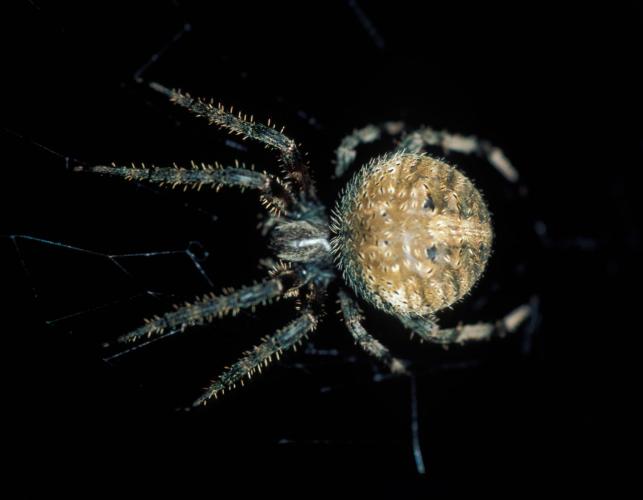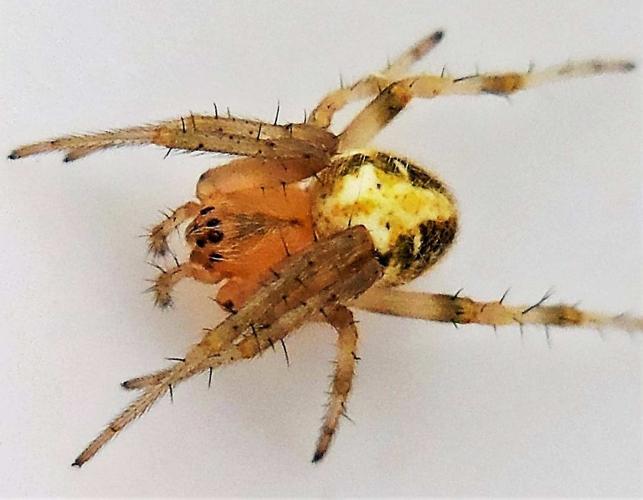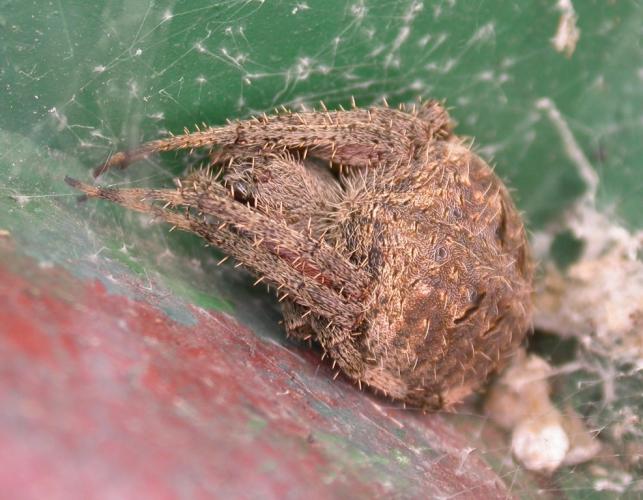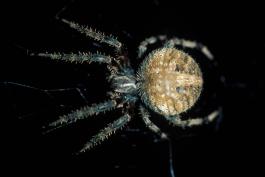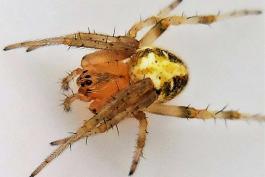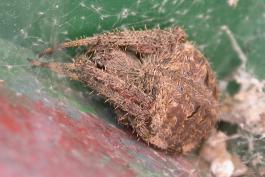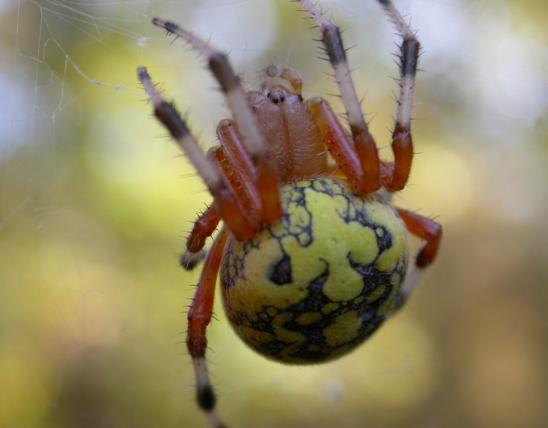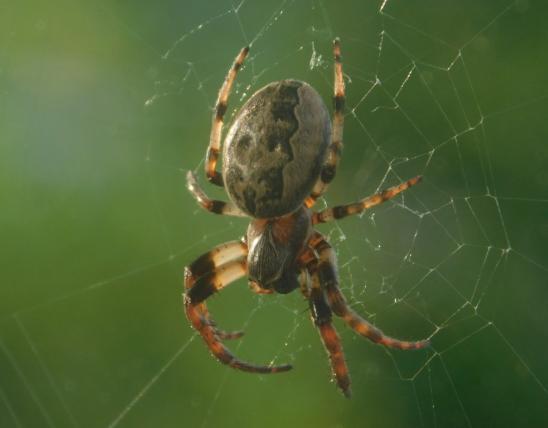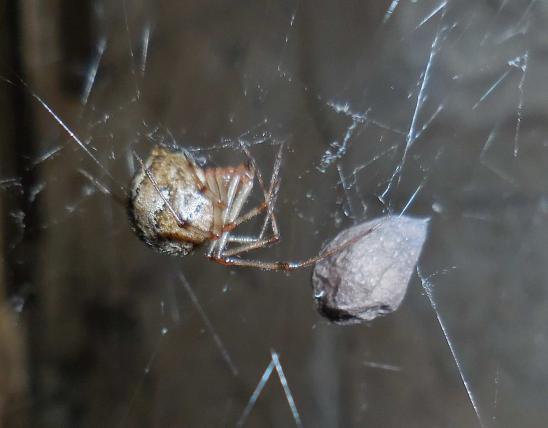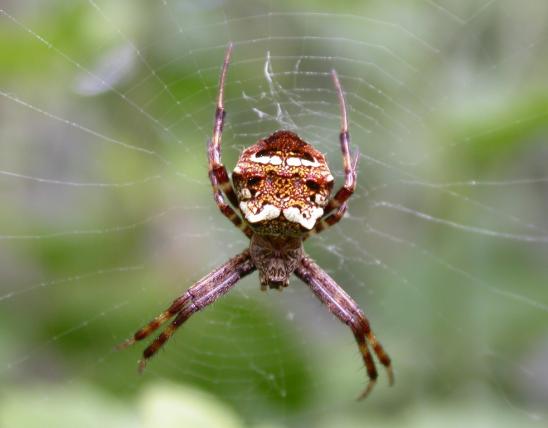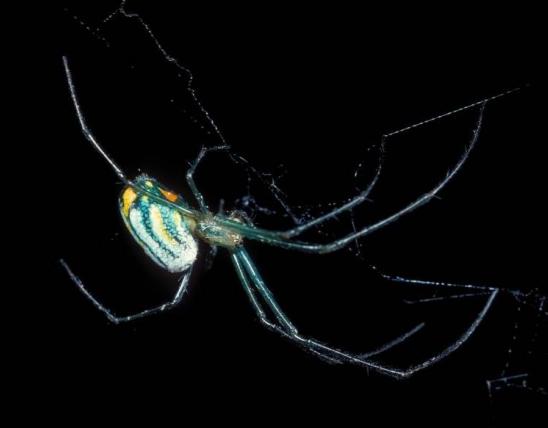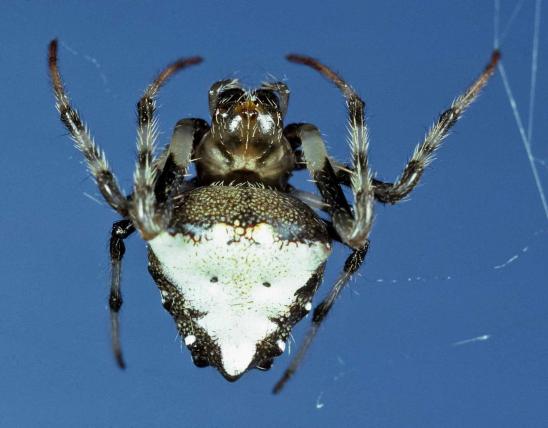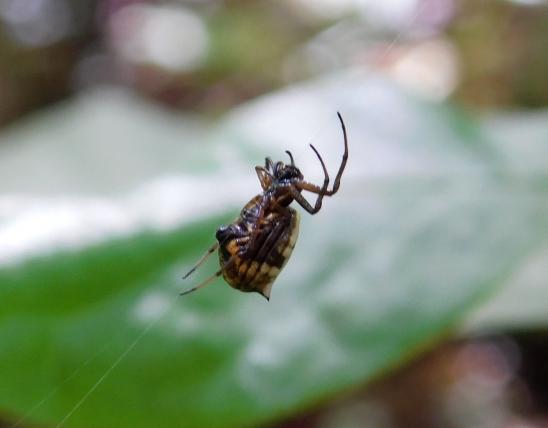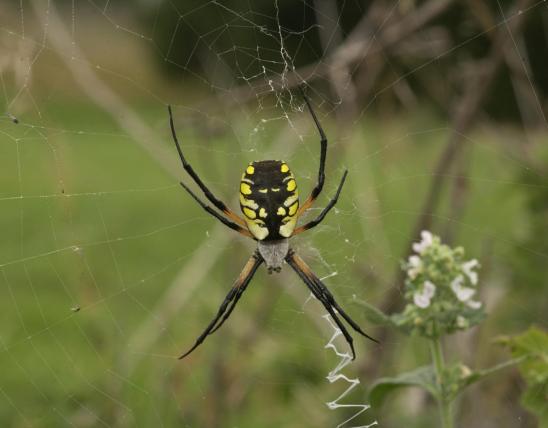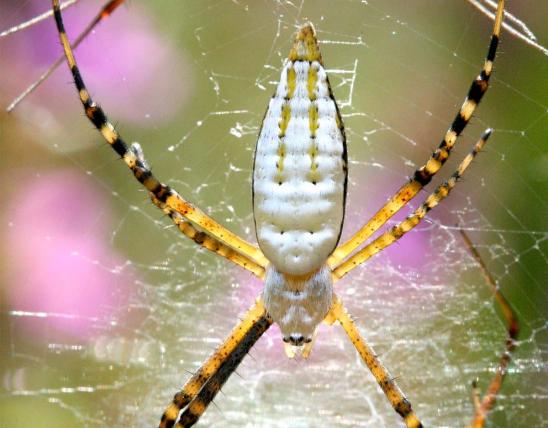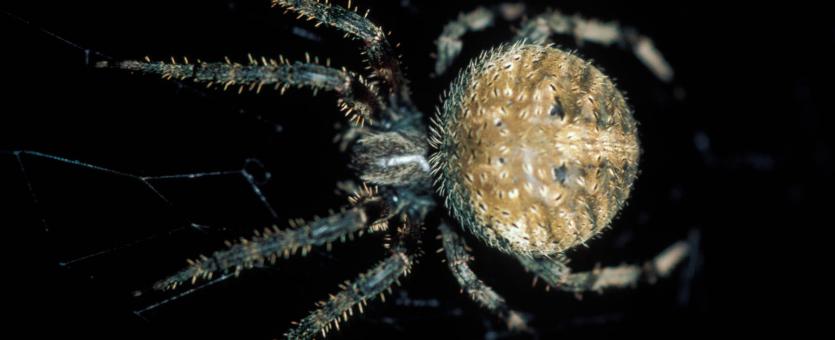
Missouri has several species of orb-weaving spiders in genus Neoscona, all called spotted orbweavers, and some are quite difficult to distinguish, even by specialists. Often, you must observe small details of their anatomy in order to determine the species.
Neoscona species have a slightly triangular-ovate abdomen with a pattern resembling an upside-down spruce tree. On each side of this midline may be black, brown, and greenish-brown markings. The legs usually are gray with brown rings. The carapace may be gray with brown markings.
Similar species: Araneus species may be similarly marked and colored, though some are quite showy and less hairy. To separate these two genera of "barn spiders," one must examine the fovea (which is a groove, pit, furrow, or other depression in the center of the carapace, the shieldlike covering of the cephalothorax, the "head" part of the spider's body). In genus Neoscona, the fovea is a lengthwise groove that runs parallel to the length of the spider's body. In genus Araneus, the fovea comprises angular or transverse grooves that run side to side across the spider's body; in some Araneus species, the fovea is little more than a dimple.
Length: usually about ½ inch (not including the legs); males are smaller than females.
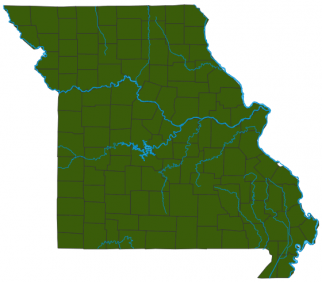
Statewide.
Habitat and Conservation
These rather large and often hairy spiders are common in open woods, brushy fields, in tall grassy areas, and around fenceposts and buildings. They are common on the eaves of houses and barns. They may build their webs wherever structures are present for support and where flying insects commonly pass through.
Food
Flying insects such as moths and crane flies are the principal prey. Once caught in sticky strands of the web, they are bitten and trussed by the spider, which later eats them. Many orbweavers are nocturnal and have the peculiar habit of eating and rebuilding their webs each day. Webs are built at dusk and used for snaring prey during the night. At dawn, the spider reingests the strands (along with moisture that has collected on it as dew) and recycles the nutrients in making the next web.
Life Cycle
Eggs hatch in spring and the young spiderlings disperse and begin building webs, hunting, and growing. Males do not spin webs. Once mature, the males wander in search of a mate, and the females hang in webs eating and awaiting a mate. Once mated, the female keeps eating and creates egg cases. The first freezes usually kill all the adult spiders, with only the eggs overwintering.
Human Connections
The amazing web patterns of spiders have fascinated humans for millennia. In Greek mythology, a skilled weaver named Arachne challenged the goddess Athena to a weaving contest that ended with the human being changed into a spider for her pride.
Orbweavers control populations of flying insects, many of which are pests.
Orbweavers don't bite unless molested, and their bites are not dangerous, anyway.
These are some of the spiders that commonly build their webs right across trails. An oldtime Ozark folk belief held that if you encounter a big orbweaver right in the middle of your path, you'll be getting a letter within a few days.
Ecosystem Connections
These spiders control populations of flying insects.
Although they may seem ferocious, outside their webs and hiding places these delicate creatures are quite vulnerable to predation themselves. Also, their egg sacs are relished by many species and provide winter food for many birds.
